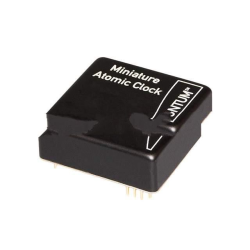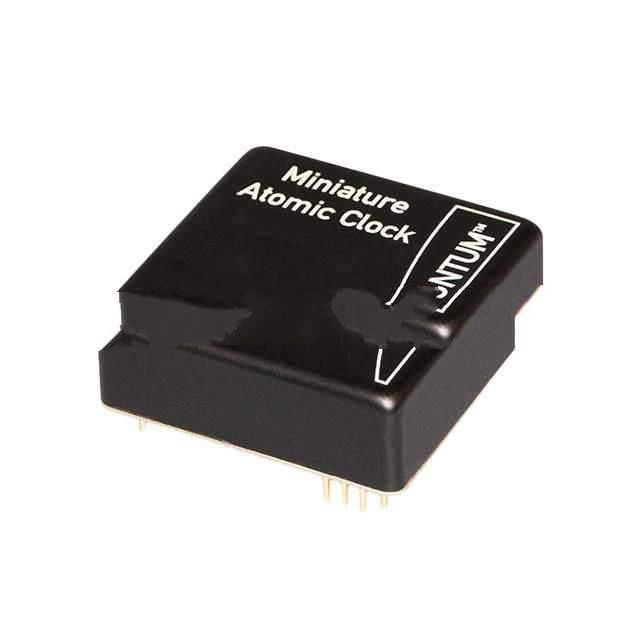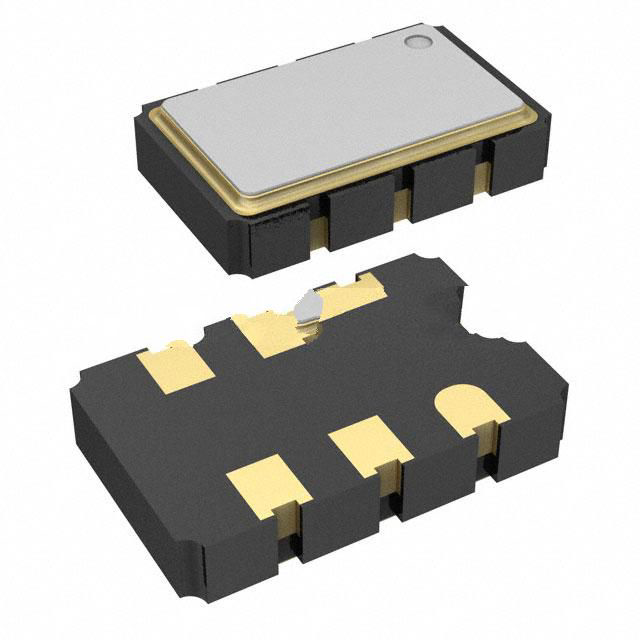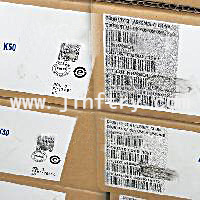What is an Oscillator? How to Use it?

What is an oscillator?
An oscillator is an electronic component used to generate a repeating electronic signal, usually a sine or square wave. It is a kind of energy conversion device - converts direct current energy into alternating current energy with a certain frequency, and the circuit it consists of is called an oscillation circuit, which can convert direct current into an electronic circuit or device with a certain frequency of alternating current signal output.
An oscillator is simply a frequency source and is typically used in phase-locked loops. Specifically, it is a device that can convert direct current energy into alternating current energy by itself without the need for external signal excitation. Generally, there are two types: positive feedback and negative resistance. The so-called "oscillation" alludes to communication, and the oscillator contains a process and function from non-oscillation to oscillation. Able to complete the conversion from direct current energy to alternating current energy, such a device can be called an "oscillator".

1 transistor amplifier; (Plays an energy control role)
2 Positive feedback network; (Feeds back a portion of the output signal to the input)
Frequency selection network; (It is used to select the desired oscillation frequency so that the oscillator can oscillate at a single frequency to obtain the desired waveform.)
How does an oscillator work?
The working principle of the oscillator is based on the concept of a positive feedback loop, through which an amplifier and a feedback loop work together to produce a stable AC signal or waveform.
The oscillator contains an amplifier and a feedback loop, the amplifier is responsible for amplifying the signal, and the feedback loop feeds back the partially amplified signal to the input of the amplifier. When the feedback signal passes through the amplifier and then returns to the feedback loop, it will be amplified again, forming a continuous cycle. In this cycle, the amplifier continuously amplifies the feedback signal, which in turn keeps returning to the amplifier, forming a self-motivated process. This positive feedback results in a continuous oscillatory output from the oscillator. The oscillation frequency of an oscillator depends on the characteristics of the components and amplifiers in the feedback loop.
In addition, the operating principle of the oscillator also includes key elements such as the energy conversion mechanism, positive feedback, amplification link, and frequency selection network. The oscillator contains an energy storage element (such as a capacitor or inductor) and a reversible energy conversion process, such as the conversion of electric field energy to magnetic field energy. In order to maintain the oscillation, the oscillator circuit must contain a positive feedback network that sends a portion of the output signal back to the input and that this feedback signal is in phase with the original input signal, enhancing the original oscillation.
What is the role of an oscillator?
The main role of an oscillator is to produce a frequency-stable signal, which is important for applications such as radio, communications, and computers.
Generate high, medium, and low frequency signals: Oscillators are capable of generating AC signals of different frequencies, which are critical in applications such as radio communications, television signal transmission, and more.
Stable frequency: In tasks that require stable oscillating waveforms, such as RF signal transmission or reception, clock signal generation, etc., oscillators can provide a highly stable frequency to ensure the synchronization and stability of the system.
Clock sources in electronic devices : In electronics that contain a CPU, the clock frequency signal generated by the oscillator is the basis for the central processing unit to execute instructions, and the higher the clock signal frequency, the faster the CPU will usually run.

What are the classifications of oscillators?
Oscillators can be classified according to different classification criteria, mainly including the following:
1. Classification by oscillation excitation method:
Self-excited oscillator: does not require external signal excitation, and only relies on the positive feedback mechanism of its own circuit to produce oscillation.Other excitation oscillators: external signals are required as excitation sources, and oscillations are generated by the interaction of external signals and internal circuits.
Resistor-capacitance oscillator: An oscillation that uses a frequency-selective network of resistors and capacitors to generate oscillations.
Inductive capacitor oscillator (LC oscillator): An oscillation circuit composed of inductor and capacitor is used to generate oscillation, including transformer coupling, three-point type (capacitance three-point type, inductance three-point type), improved three-point type (Clapper oscillator, Hiller oscillator), etc.
Crystal oscillator: An oscillator whose oscillation frequency is controlled by a quartz crystal, and has extremely high frequency stability.
Tuning fork oscillator: Uses the piezoelectric effect to produce electrical oscillations through the mechanical vibration of the tuning fork.
Integrated circuit oscillator: An oscillator that integrates an oscillation circuit on a single chip, which has the advantages of small size, low power consumption, and easy integration.
Sine wave oscillator: An oscillator whose output waveform is a sine wave.
Square wave oscillator: An oscillator whose output waveform is a square wave.
ZigZag Oscillator: An oscillator whose output waveform is a zigzag wave.
What are the advantages of oscillators?
The advantages of the oscillator mainly include the following aspects:Self-oscillation: The oscillator feeds back part of the output signal to the input through a feedback loop, generating a positive feedback effect, so as to generate periodic oscillation signals on its own, without external excitation.
Fixed frequency: The frequency of the output signal generated by the oscillator is fixed, closely related to the characteristics and working state of the circuit components, and is not subject to external frequency interference.
Waveform stabilization: The waveform output by the oscillator is usually stable, which can be a sine wave, a square wave, a pulse wave, etc., with a high waveform quality.
Adjustable frequency: Some oscillators can adjust the output frequency by adjusting the circuit parameters or adding control elements.
Amplitude stability: The output signal of the oscillator has a fixed amplitude at steady state and does not fluctuate greatly with time or temperature.
What are the applications of oscillators?
1. Electronics industry
The oscillator is an indispensable component in the electronics industry, which is used to generate repetitive electronic signals, usually outputting sine waves or square waves, and is widely used in various electronic devices.
2. Medical field
Oscillators are also used in medical devices, such as to generate high-frequency signals in ultrasound devices and timing signals in electrocardiogram devices. These applications also require high-precision, stable high-frequency signals with higher requirements for signal accuracy and stability.
3. Scientific research
In the field of scientific research, oscillators are used for frequency control and signal generation of experimental equipment to ensure the accuracy and repeatability of experiments.
4. Communication technology
Oscillators are widely used in the field of communication, such as generating modulation signals in radio communications, carrier signals in FM TV, stable horizontal synchronization signals in stable frequency TV, and basic frequency signals in digital mobile communications. These applications require high-precision, stable high-frequency signals, and oscillators provide the necessary support.
5. Computers
Oscillators are also widely used in the computer field, for example, to generate clock signals in motherboards and to generate timing signals in computer memory controllers. These applications also require high-precision, stable high-frequency signals, and oscillators also play an important role.
6. Military applications
Oscillators play an important role in military communications, radar systems, and navigation equipment, ensuring the transmission and reception of signals.
7. Measurement and metrology
The high precision and stability of the oscillator make it suitable for use in the field of measurement and metrology, such as laser interferometers and laser gyroscopes.
8. Lighting and display technology
Oscillators are used in lighting equipment and display technology to control the frequency and intensity of light signals to achieve stable lighting effects
9. Audio and video processing
Oscillators are used in audio and video processing systems for frequency control and waveform generation of signals to ensure the quality of audio and video signals.
How to use the oscillator?
If you have an oscillator and don't know how to use it, this article may help you. The following is how to use the oscillator and what to note:Stable installation: Make sure the shaker is securely mounted on the bench to avoid vibration affecting the results.
Sample injection: Inject the appropriate amount of sample into the shaker, taking care not to overdo it.
Adjust the mode and speed: Adjust the vibration mode and speed of the oscillator according to the experimental needs to meet different experimental requirements.
Constant temperature control: Some oscillators have a constant temperature control function, and the appropriate temperature can be set according to the needs of the experiment.
Operation mode: The oscillator usually has a variety of operation modes, such as reciprocating, rotating, etc., choose the appropriate mode for the experiment.
Safe Operation: When using the shaker, ensure that laboratory safety practices are followed to avoid electric shocks and other safety incidents.
Regular maintenance: Regularly inspect the various parts of the oscillator to ensure its normal operation and replace the worn parts in time.
Cleaning and maintenance: Clean the shaker and samples after the experiment to keep the instrument and laboratory tidy.
Proper storage: When not in use, store the shaker in a dry, ventilated place to avoid moisture and damage.
Statement
All articles (images, texts, audio) on this site are uploaded and shared by users, or integrated from relevant internet sources, only for user's learning. If your rights are violated, please contact the administrator to delete! Link to this article: https://www.jinftry.com.
EHT-122-01-S-D-SM-23-P│ EHT-122-01-S-D-SM-LC-22-K│ EJH-125-01-F-D-SM-46│ EKMG250ELL470ME11D│ EKMT451VSN561MA50S│ EL8302ISZ-T13_152│ EM357-MOD-LR-RF-T│ EP1SGX25DF672C7_187│ ERA-3AHD430V│ ERA-8AEB2212V│ ERC5037R900DEEK500│ ERC50536R00FHEA500│ ERC50715R00BEEK500│ ERC5088R700FEEB500│ ERC5563K400DKEK500│ ERJ-14NF1803U│ ERJ-H2RF15R0X│ ERJ-H3ED1910V│ ERJ-P6WF1471V│ ERJ-PA2F2053X│ ERJ-PA3J512V│ ERJ-S02F7150X│ ERJ-S06D6650V│ ERJ-S06F6342V│ ERJ-S12D19R6U│ ERJ-U03D3321V│ ERJ-U03F1201V│ ERJ-U12J1R2U│ ERJ-UP3F62R0V│ ERL0511M000GNEK500│ ERM5-060-04-0-S-DV-TR│ ERM8-050-02-0-L-DV-DSS-K-TR│ ERZ-C20EK361Y│ ESM28DRTF-S13│ ESQ-117-14-G-D-LL│ ESQ-121-34-S-T-LL│ ESQ-125-39-G-S-LL│ ESQ-135-33-G-S│ ESQT-103-03-G-D-312-006│ ESQT-108-03-G-D-380│ ESQT-113-02-F-D-781│ ESQT-114-03-G-T-400│ ESQT-118-02-L-T-551│ ESQT-146-03-H-6-375│ ESQT-150-02-F-D-705│ ESW-105-48-S-S│ ESW-127-48-L-D│ ESW-132-24-G-D│ ET60S-03-24-02-L-RT1-GP│ EV0961500000G│ EXB-N8V563JX│ F339MX254731KKP2T0│ F461KG823G160L│ FC-135-32-7680KA-AC5│ FCC17B25PB4DB│ FCR1210KT100R│ FD225R17ME3│ FFA-1S-304-CLAC62│ FLE-111-01-GF-DV-A│ FMC05DREH-S734│ FMF200FRF73-4K7│ FMP100FRF52-80K6│ FNPYR0010B│ FOD817D300│ FS32K148HFT0VLQR│ FSI-140-10-L-D-E-K│ FTMH-140-02-L-DV-A-TR│ FTS-110-03-L-DV-S-P│ FTS-112-01-G-DV-TR│ FTSH-108-01-FM-DV-A│ FTSH-137-05-F-DV│ FTSH-139-04-G-MT│ FTSH-148-01-SM-MT-TR│ FW-05-05-F-D-411-169│ FW-06-02-L-D-350-065│ FW-09-03-F-D-255-140-P│ FW-10-03-L-D-293-107│ FW-25-02-L-D-410-120│ FW-33-04-L-D-370-150│ G2RV-SL700-AC230│ G8P-1C4P-DC48│ GB8PI│ GBU8M-E3-51│ GEC36DRES-S93│ GEM25DSXN│ GJM0335C2A6R0DB01D│ GL050F23CDT│ GMC21X7R222K50NT│ GMC43DRXI-S734│ GRM0335C2A820JA01J│ GRM033R70J562KA01D│ GRM1555C1H560FA01D│ GRM2166S1H270JZ01D│ GRM31BR72E683KW01L│ GSA15DRMD-S288│ GTCL00F14S-6S-B30│ GTCL01F32-22S-027-B30│ GTCR36-750M-R10│ GTS07R36-5SX│ GTS447N301HR│ GTT38A-TPR-BLH-B0-H1-CT-VPT│ GW-JCLMS1-EC-GTHP-5L7N-L1N2│ H16WD6075│ HBC08DRTI-S93│ HBC20DRYS│ HCC26DRES-S734│ HEDL-5500-G12│ HEX40-AB-45-17-A6-3│ HHV-50FT-52-8M87│ HM17-664101LF│ HMC1048LC3BTR-R5│ HMC565-SX│ HPS0631503JKB15│ HSC18DRYH-S13│ HVC0402T1004JET│ HVR6800004303JAC00│ HZ4B3TD-E│ IEGF66-32427-3-V│ IHLW5050CEER1R5M01│ IHSM3825EB3R3L│ IPB075N04LG│ IRF6810STR1PBF│ IRG7PH50UPBF│ IS42VM16800G-6BLI│ ISO7831FDW│ JCK3012D05│ JTG06RT-14-5S│ JTP02RE-16-35P-LC│ KF0970500000G│ KJB6T25J61SB│ KJB7T13F8PA│ KJB7T23F21JD│ KNP1WSJT-52-0R75│ KO119A7325│ KTR10EZPF1911│ KTR10EZPJ151│ L06P700S05│ L77TWA11W1SESV4FA203│ LED75W-200-C0350-D│ LFG480303SQDINR│ LJT06RT-11-2S-014│ LKS1J182MESY│ LM2901PWRG4│ LM337BD2TR4G│ LM4040DIM7-2-5-NOPB│ LMX2331UTM-P4984144│ LP2980IM5X-4-7│ LQH3NPZ2R2MGRL│ LQW18CN15NJ00D│ LQW2UAS4R7J00L│ LT6238HGN-TRPBF│ LTC2637CDE-HMI12-TRPBF│ LTC3425EUH-TRPBF│ LX64EV-3FN100C│ LY2-0-DC6│ M1330-04K│ M39003-01-2250-HSD│ M39003-01-2791-HSD│ M39003-01-6331H│ M55342E02B432ARWI│ M55342E04B625ART5│ M55342E06B82A0ST5│ M55342E12B10B0SWP│ M55342K02B453ARWS│ M55342K03B309BRWS│ M83723-72R14129_551│ MAL211655221E3│ MAX17605ASA│ MAX3212EAI-T│ MAX3227EEAE-T│ MAX4389EUT│ MAX6390XS26D4│ MAX8632ETI-T│ MAX8725ETI-TG24│ MAX8922ETB-T│ MB90522BPFV-GS-143-BND│ MB96F635RBPMC-GSAE1│ MBA02040C6194FRP00│ MBB02070C2700FRP00│ MC22FA202J-TF│ MC74ACT139DTR2G│ MC78M05CDTT5│ MC9S08SH4MTJR534│ MCC56-14│ MCR18EZPJ104│ MD021C393KAB│ MDM-21PSK│ ME30A2402C01│ MEA1D0505SC│ MF0207FRD52-698R│ MFR-12FRF52-1R87│ MFR100FRE52-1K78│ MFR2WSFTF52-27K│ MFR50SDBE52-5K62│ MHQ1005P8N2JTD25│ MI-222-IW-F4│ MI-27W-MY-S│







